Whole Food Plant-Based Pantry Staples
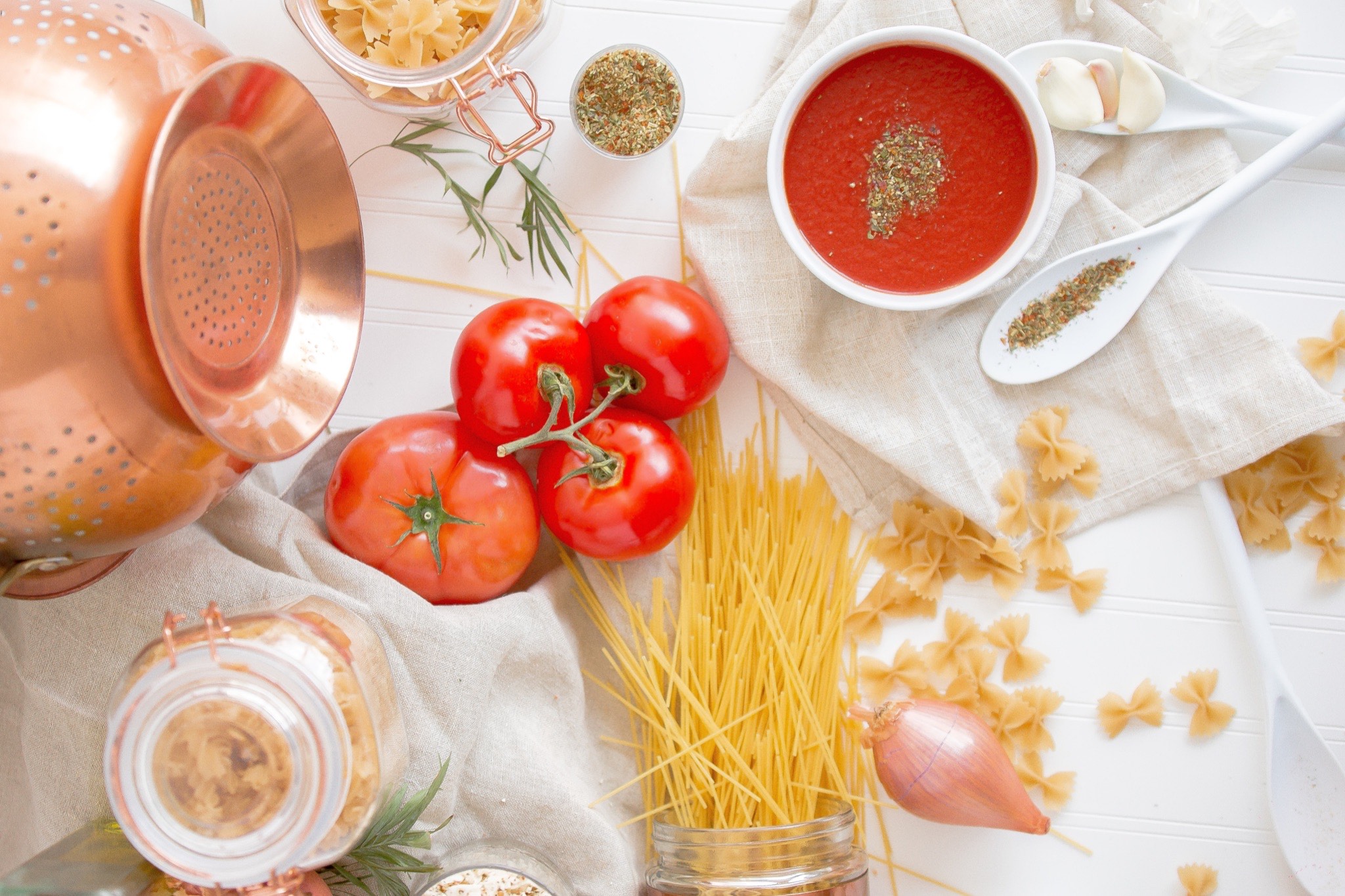
You’ve made up your mind to get started living a whole food plant-based lifestyle, but now you’re anxiously standing in front of your fridge and pantry. “Do I buy bags of salad and bananas for the rest of my life”, you may be thinking. Or, “How in the world am I going to stay full?” Well, get ready for a fridge and pantry makeover with this list of whole food plant-based pantry staples that I’m sharing with you!
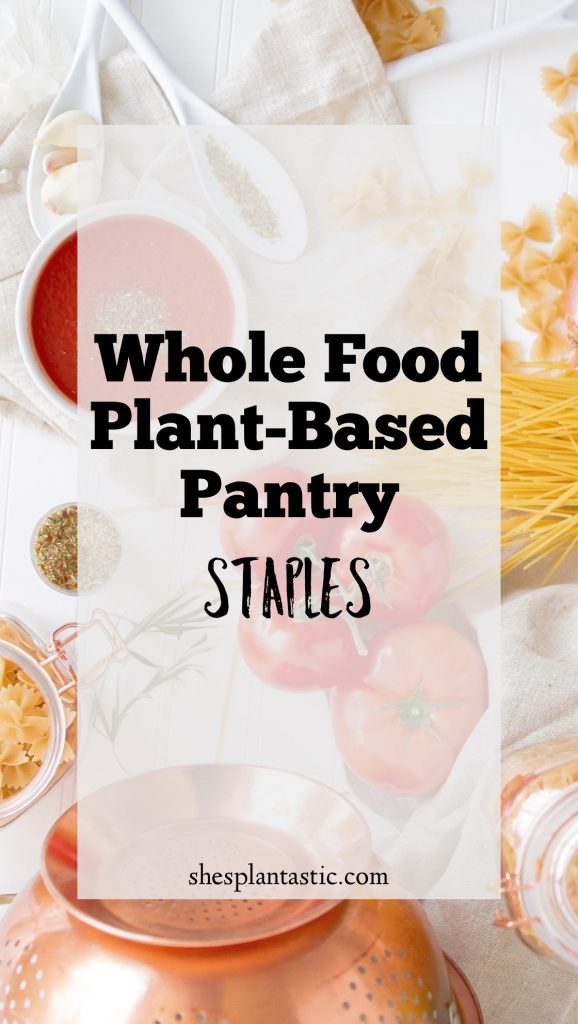
No need to agonize about what to keep in stock because I’ve made it easy for you to get pantry inspiration and ideas. This list is based on ingredients that I keep regularly available in my home.
Grains:
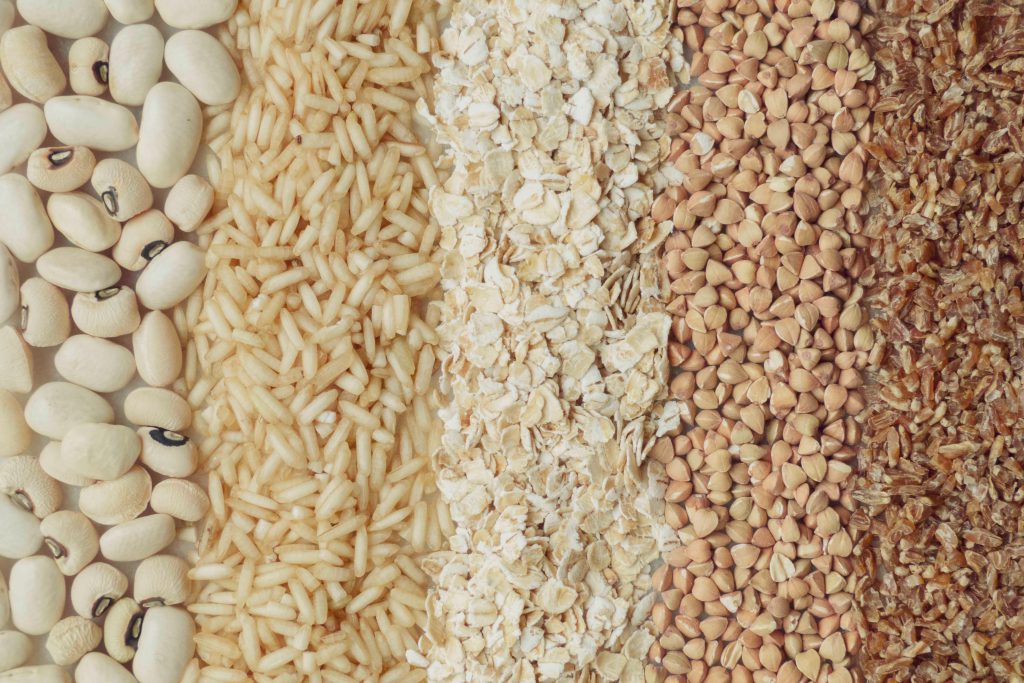
- Whole wheat bread/tortillas/naan
- Whole wheat spaghetti and pastas
- Quinoa
- Whole wheat couscous
- Brown rice/brown jasmine rice
- Rolled oats
- Steel cut oats
- Uncle Sam cereal, Grape Nuts, Mini Wheats
Whole grains are vital to a whole food plant-based diet because they are a great source of fiber, iron, B vitamins, and protein. I always make sure to have a good stock in my pantry since I eat a serving for almost every main meal.
Dried Food:
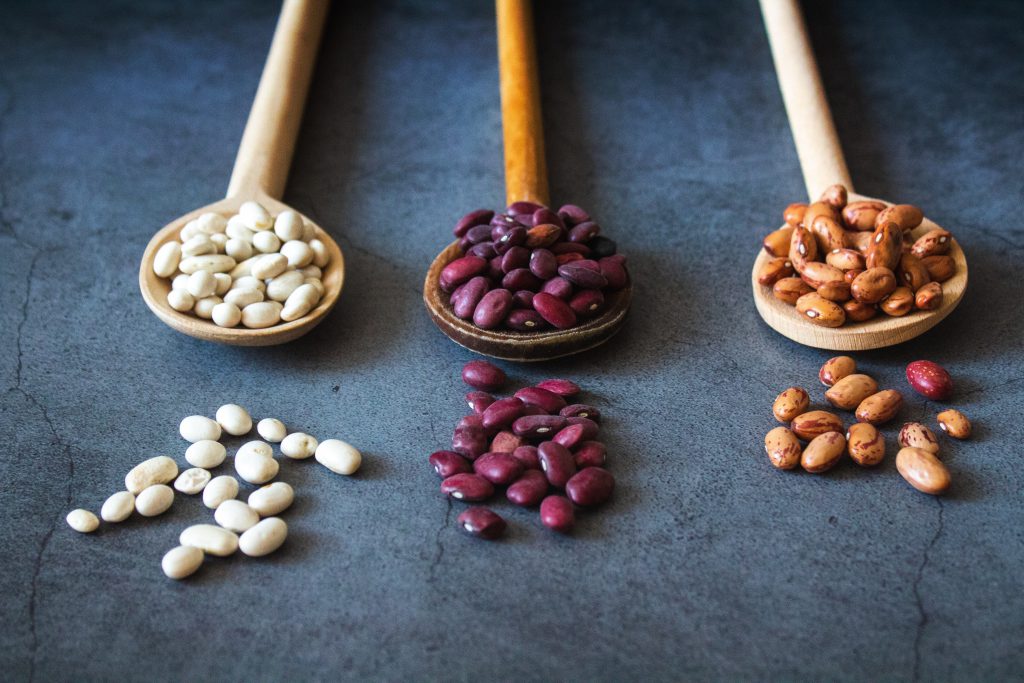
- Lentils – brown, green, red, yellow…
- Split peas
- Dried Fruits – dates, apricots, raisins, cranberries, coconut…
- Beans – pinto, kidney, garbanzo (chickpeas), black-eyed peas, navy, cannellini, black…
- Unroasted, raw seeds – sunflower, pumpkin, chia…
- Unroasted, raw nuts – walnuts, pecans, almonds, brazils, peanuts…
Dried beans and lentils are amazing for crockpot and instant pot cooking. They have a versatile texture that compliments a lot of other ingredients, they absorb flavors, and they add heartiness to a meal.
I love to sprinkle dried fruits, nuts, and seeds in my breakfast bowls/cereals or eat a handful of them for a snack. There are many delicious muffin, cookie, and bread recipes that use these nutrient rich and Omega-3 packed goodies!
Fresh Fruit:
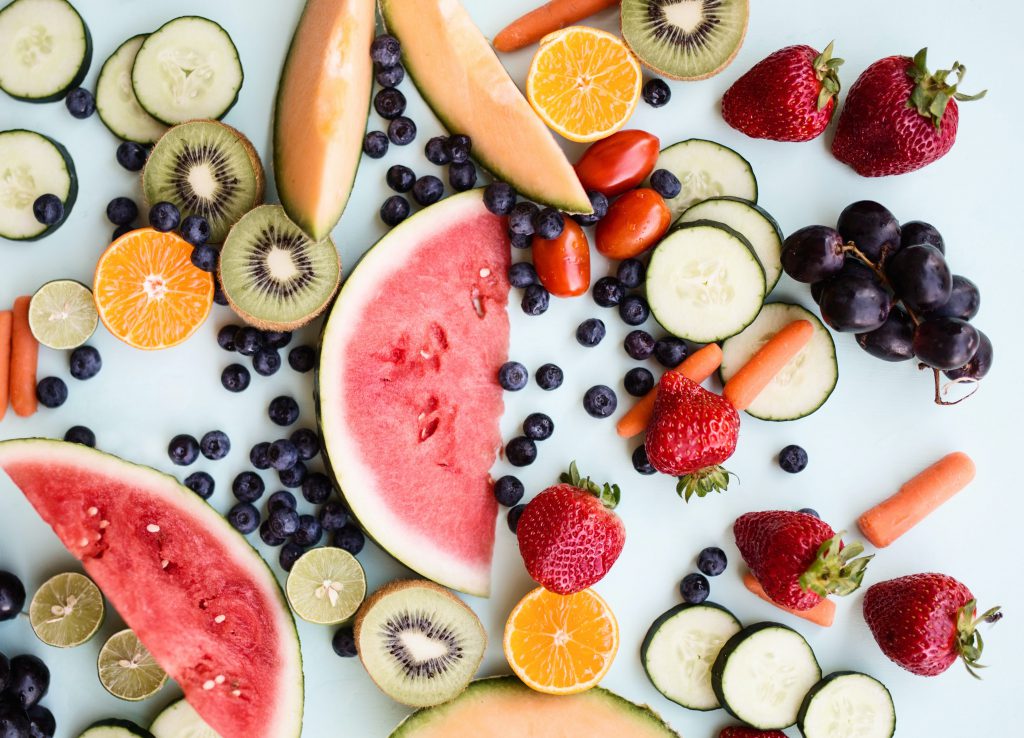
- Strawberries
- Blueberries
- Blackberries
- Bananas
- Kiwi
- Cherries
- Peaches
- Nectarines
- Red Grapes
- Apples
- Cantaloupe
- Watermelon
- Pineapple
- Mangoes
- Plums
Obviously, I don’t have every single one of these fruits at any given time. I buy whatever is in season, but I will always have bananas, strawberries, blueberries, kiwi, and grapes year round. They’re a staple for my steel cut oat breakfast bowls and are great for snacks and smoothies.
Fresh Vegetables and Greens:
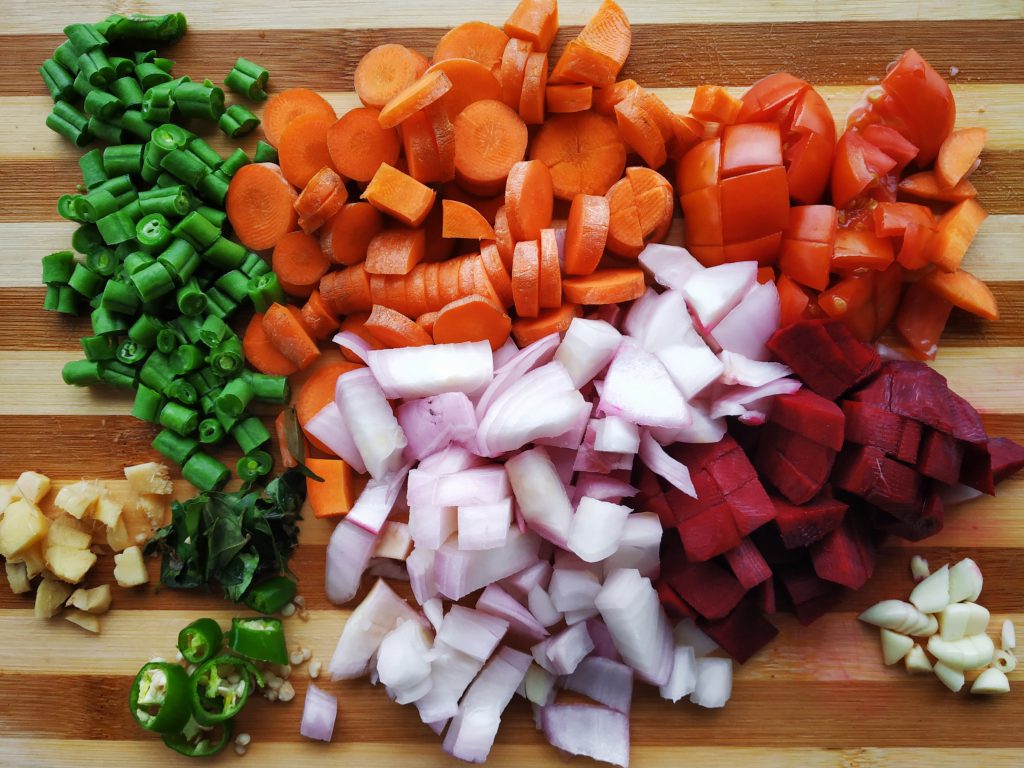
- Potatoes – sweet, red, baking, Yukon gold, purple…
- Onions – white, yellow, red
- Ginger root
- Tomatoes
- Celery
- Avocados
- Cilantro
- Parsley
- Carrots
- Artichokes
- Brussel sprouts
- Asparagus
- Squashes – yellow, zucchini, butternut, spaghetti…
- Broccoli
- Cauliflower
- Bell peppers
- Mushrooms
- Green beans
- Tofu (really a bean, but you find it in the produce section)
- Swiss chard
- Romaine lettuce
- Spinach
- Kale
Like fresh fruit, I also buy vegetables when they’re in season like artichokes, asparagus, and green beans. Beside these, a lot of the other vegetables are readily available and I eat them quite often. If you’re craving an out of season veggie, go look for it in the frozen section!
Canned:

- Beans – garbanzo (chickpeas), pinto, cannellini, black, navy, kidney…
- Corn
- Rotel (diced tomatoes and green chilis)
- Diced tomatoes
- Fire-roasted diced tomatoes
- Tomato sauce, puree, paste…
- Lentils
- Low sodium vegetable broth
- Oil-free spaghetti/pizza sauce
- Fruit in 100% juice
Half of my pantry is made up of canned goods. It’s so easy to grab a can of beans or corn and not worry about soaking dried beans for hours or scratch a recipe idea because I don’t have fresh corn available in the fridge.
Remember that whole food plant-based eating’s goal is to keep the foods in their original state as much as possible. Therefore, I buy canned fruit in 100% juice because my body doesn’t need fruit marinated in high fructose corn syrup. And with canned vegetables, I try to buy “low sodium” or “no salt added” options when available. The less refined, the better!
Frozen:
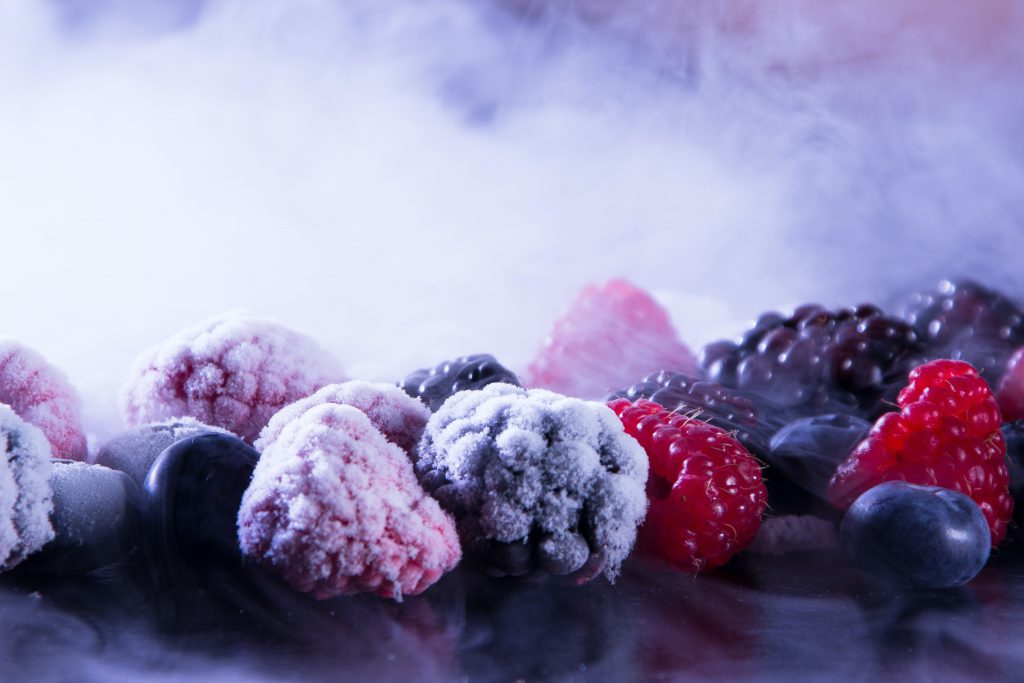
- Fruit/berries
- Vegetables
- Ezekiel bread
I love the peace of mind that comes with having a small stock of vegetables and fruits in the freezer. The frozen fruits are mostly used for smoothies and the vegetables are super convenient when I want to make something fast in the microwave.
If your budget allows, try getting into the habit of always having a loaf of bread, tortillas, or naan in the freezer.
In the past I’ve tried buying two loaves of bread (because one wasn’t enough before the next grocery trip) to see if my small family and I could eat them before they expired or molded (whichever came first – bread is so finicky) and never won that battle. By putting the second loaf in the freezer, it takes the pressure off of making sure it’s eaten in time and then now I always have bread when I need it!
Condiments:
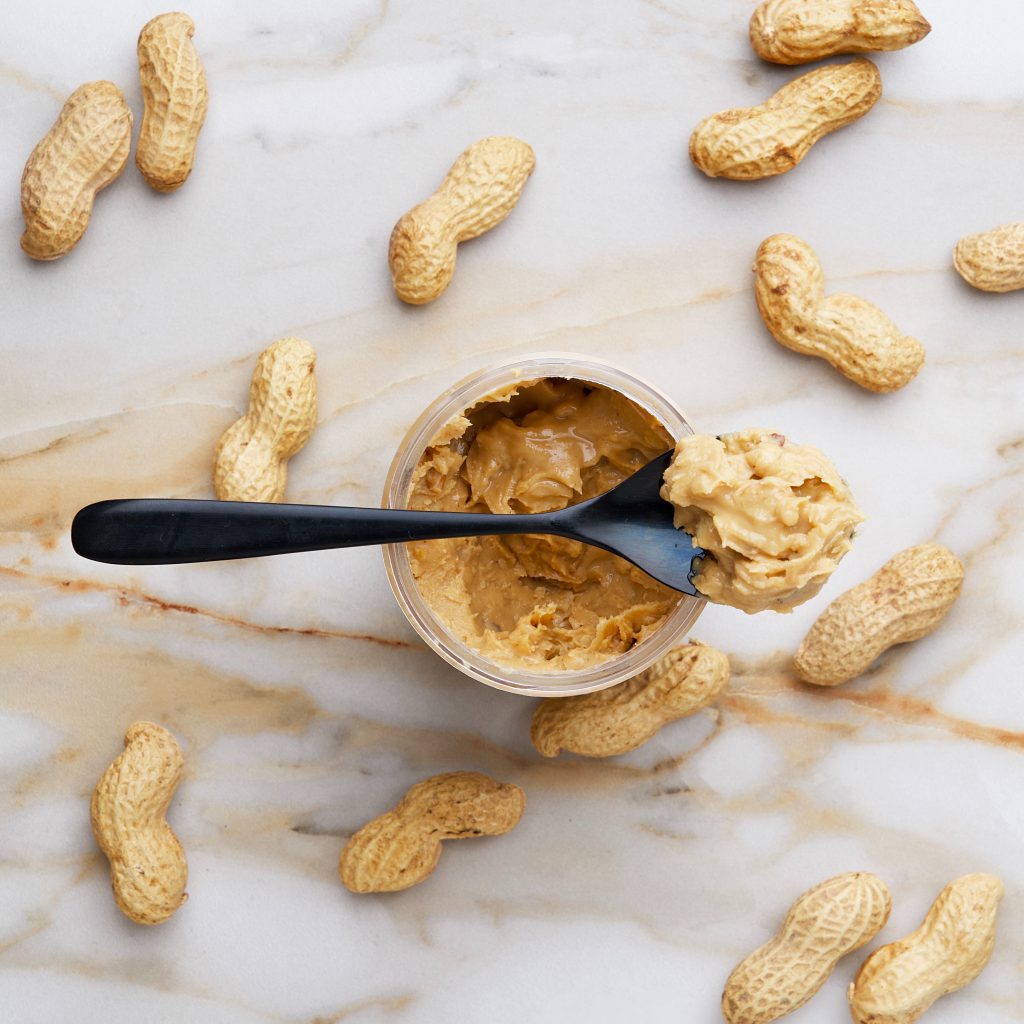
- Tahini
- Minced garlic in water
- Vinegars – balsamic, apple cider, rice, white wine
- Dijon mustard
- Oil-free peanut butter and almond butter
- Ground flaxseed
- Nutritional yeast
- Almond milk
- Salsa
From cooking, to baking, to snacking, I use these condiments weekly.
For example, I use ground flaxseed as a breakfast topping and for making “flax eggs” as a substitute for eggs in baking, nutritional yeast as a pizza topping or to thicken chili, and tahini for my chickpea salad sandwiches and hummus.
Baking/ Sweeteners

- Maple syrup
- Date paste/syrup
- Raw cane sugar
- Unsweetened applesauce
- Whole wheat flour
- Almond flour
- Oat flour
- Baking soda
- Low sodium baking powder
- Cocoa powder
It’s really important to have whole food plant-based sweeteners as a pantry staple – especially if you are baking fiend, like me. They are an excellent substitute for white sugar, eggs, and oils.
Spices:
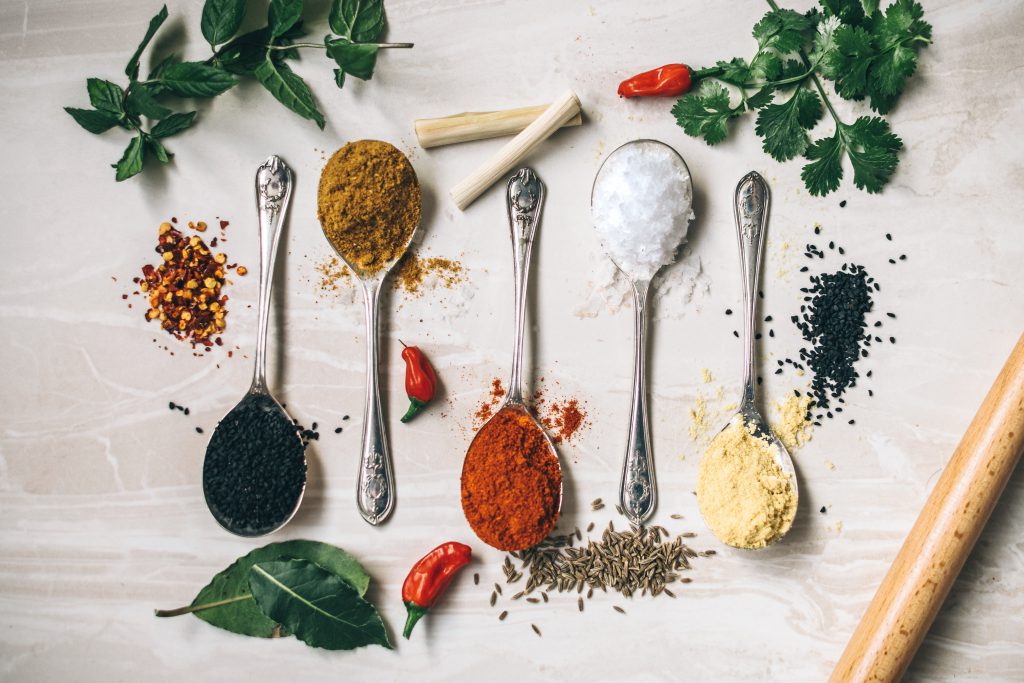
- Cinnamon
- Cumin
- Chili Powder
- Turmeric
- Garlic powder
- Onion powder
- Paprika
- Smoked paprika
- Pepper
- Oregano
- Thyme
- Italian seasoning
- Cajun seasoning
- Cayenne pepper
- Coriander
- Curry powder
- Bay leaves
- Garam masala
Not only do spices exhilarate the senses and are jam-packed with anti-inflammatory properties, but they also make me feel powerful. When I stand in front of my spice racks, I feel as if I’m a wizard potions professor carefully picking out the spices that will activate the magic in my meal… too much? Okay, I’ll calm down… Just kidding, it’s not gonna happen.
But really, when spices are combined with whole foods, they not only elevate the flavor, but they unlock amazing anti-inflammatory and nutritional magic may help protect you on a cellular level from inflammation damage that can cause lifestyle diseases, pain, and can even help fight against cancer.
Add a multitude of spices to your whole food plant-based pantry!
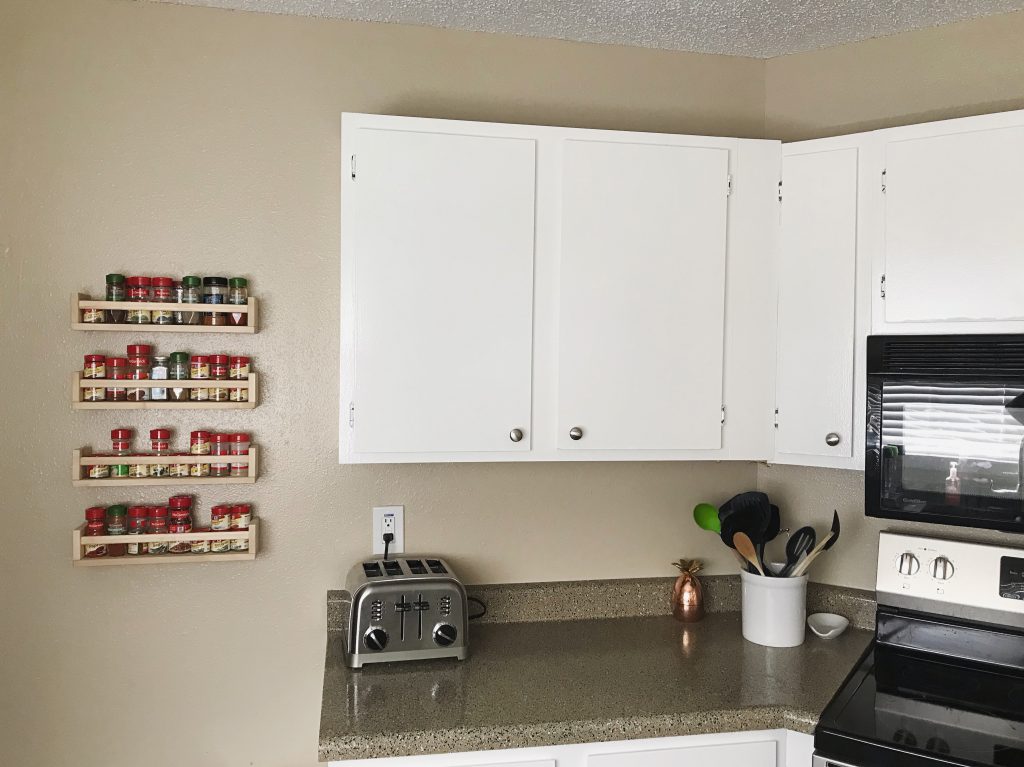
Building Your Whole Food Plant-Based Pantry:
Don’t let this list overwhelm you! But I do need to let you know that it won’t be a pleasant experience for your wallet if you shop for most of these items all at once.
So, my tip for you is to build your new plant-based pantry incrementally.
Two reasons to build it slowly:
1st: So you don’t break the bank!
For example, if you buy all the spices at once, you’re looking at around $40-50. Some of them may seem extra pricey, especially with the perspective of completing your spice rack in one transaction.
Most of the foods that are more “expensive” are foods that usually have a long shelf life like spices and grains, for example. So it makes better sense to gradually accumulate those items and you’ll find that they aren’t so expensive after all when you budget them out!
Don’t sweat it if you don’t have everything at once. Sometimes I have perfectionist tendencies and think that if I’m going to do something correctly, I have to do it all the way, all at once, in order to succeed. Switching your pantry to a whole food plant-based inventory is best done slowly and you won’t fail doing so. It’s cost effective and:
2nd: It will help you understand how to use the food that you bought.
Whole food plant-based eating is centered on a lot of fresh produce. If you (with good health intentions) buy a ton of fruits and vegetables without a game plan for them or if you’re trying to expand your palette and try new foods all at once, then most likely a good portion will spoil and go to waste before you had a chance to use them.
Start smaller and get acclimated to a few fruits and vegetables first. Find a handful of recipes that call for certain new ingredients and practice with them and get comfortable preparing and eating that produce regularly.
As you begin to eat plant-based, you’ll learn how much your body is willing to eat in order to get full. After you do this, then start adding more to your fridge and pantry!
A Whole New World of Food:
Although I listed my pantry staples, there are still more whole food plant-based ingredients out there to eat! Who knows, something else might become a personal staple for your own pantry.
Having a pantry and fridge stocked with healthy foods to thrive off of is invigorating and extremely motivating! I love looking in my fridge and seeing an array of colors and freshness that I know will give me all the nutrients, antioxidants, and disease preventing properties that my body needs and loves.
Best of luck to you as you endeavor in your pantry transformation! Please don’t be daunted; you can do this! If you need recipe and cookbook inspiration, then check out my resource post and my Pinterest!
Leave me a comment and tell me how you plan to build up your whole food plant-based pantry!
-Melissa
This is such timely and helpful advice. Thanks for a through listing! I’ll use this to go through our family’s pantry and freezer and see what we need to stock up on.
Thanks, Katrina! I’m glad I could help! 🙂
Great set of tips and recommendations! People need help with this more than ever! Thanks for making such a great guide!
Thanks, Morgan! This post was inspired by friends asking me to make a shopping list for them, so hopefully more people can can benefit from this too!
There are so many great ingredients here, I had never heard of some of these. Looking forward to looking for these in my grocery store.
Hi, Grace! I had never heard of some of these ingredients either until 3 years ago, but now I can’t live without them! Just start small and find what what you will use often in order to create your own staples. 🙂
Great list! I LOVE lentils – we use them in SO much. They are a versatile ingredient and a great substitute for meat in many cases. In reading this, there are a few things that I could definitely stock up on… I added a bit to this week’s grocery list for my husband lol
Wonderful, Britt! 🙂 Happy to give out new ideas!